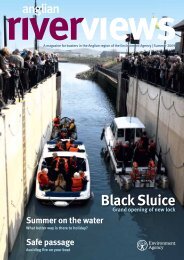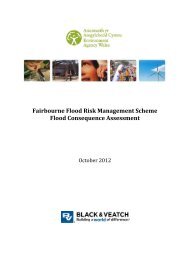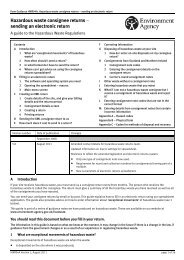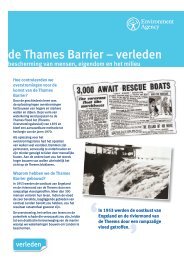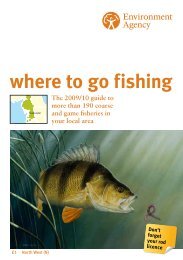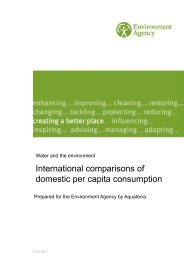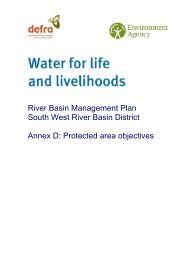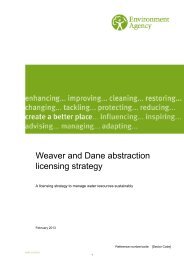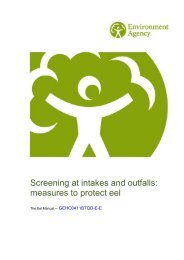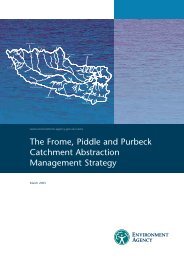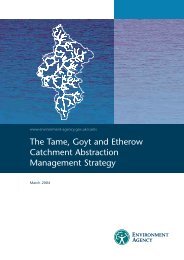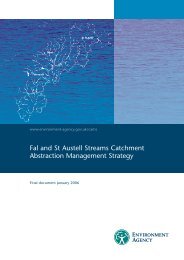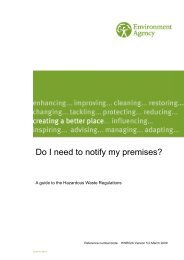Karenia mikimotoi
Karenia mikimotoi
Karenia mikimotoi
Create successful ePaper yourself
Turn your PDF publications into a flip-book with our unique Google optimized e-Paper software.
found that gram-negative bacteria associated with cyanobacterial mucilage could be a<br />
source of endotoxins.<br />
Sharma et al. (2006) characterized the airborne algal diversity in subtropical urban<br />
environment, the city of Varanasi in India. The city is surrounded on three sides by<br />
open agricultural land and on the other side the river Ganges. Results indicated that<br />
airborne algae are a permanent constituent of the city atmosphere. Cyanobacteria<br />
were found to dominate the aerial algal flora, which was attributed the fluctuating<br />
climates of subtropical regions. The majority of the airborne algae were of local origin,<br />
indicating short-distance transport of the algae. Soilborne algae constituted the bulk of<br />
aerial algal flora. This was attributed to their ability to withstand the dehydrating effect<br />
of the atmosphere. These workers concluded that their findings could have implications<br />
for human health as airborne algae could act as allergens (McElhenny et al. (1962) and<br />
Maynard (1968) cited in Sharma et al., 2006). They also cited a point made by<br />
Maynard that, along the shoreline of lakes and other water bodies, fragments of scums<br />
and foams with their contents of algae can be picked up by the wind and dispersed.<br />
Sharma et al. (2008) investigated the allergenicity of the cyanobacteria<br />
Phormidium fragile and Nostoc muscorum isolated from samples of airborne particles.<br />
Of the two, the latter was more allergenic but when the two were mixed in equal<br />
amounts their allergenic effect was increased.<br />
Cheng et al. (2007) carried out laboratory and field studies on sampling techniques and<br />
measurement of aerosols containing microcystin. The techniques were used in a field<br />
study to determine if aerosols containing microcystin could be found in and around a<br />
body of fresh water containing a bloom of cyanobacteria and if people engaged in<br />
recreational activities could be exposed to the aerosol. The preliminary results<br />
indicated the answer to both questions was ‘yes’. Concentrations of the microcystin in<br />
the water were low (ca. 1 μg.L -1 ) so the aerosol samples contained very low levels of<br />
microcystin, barely above the level of detection. The study demonstrated that it is<br />
possible using both high-volume and personal samplers to detect very low levels of<br />
microcystin in aerosols in areas where cyanobacteria are present and that these<br />
methods could be used in future studies to asses the exposure and dose of inhaled<br />
microcystin received by humans engaged in recreational activity.<br />
Burns (2008) noted:<br />
“Historically, atopic sensitivity to cyanobacteria has been reported following exposure<br />
to algae in lakes. For example, Heise (1949) found blue green algae responsible for<br />
seasonal rhinitis following exposure to algae while swimming in lakes. Human<br />
sensitivity to cyanobacteria may be related to a hereditary predisposition toward<br />
developing certain hypersensitivity reactions when exposed to specific antigens”.<br />
He goes on to comment that, as regards Florida, “….relationships between toxic<br />
cyanobacteria and their environmental consequences remain largely in the realm of<br />
incidental observation and speculation.” This topic is discussed further in sect. 6.<br />
Hudnell and Dortch (2008) presented a synopsis of research needs identified at the<br />
Interagency, International Symposium on Cyanobacterial Harmful Algal Blooms (ISOC-<br />
HAB) held in 2005. Among the needs highlighted was –<br />
“An understanding of the interactions between cyanotoxins and environmental factors<br />
is needed to assess the potential for exposure of human and other biota. Of particular<br />
interest is the transportation of cyanotoxins through aerosols, biota, and water….”<br />
36 A Literature review of the potential health effects of marine microalgae and macroalgae



